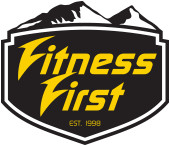Muscle Soreness: What causes it? Does it correlate to muscle growth? And should you train when sore?
Muscle soreness is an uncomfortable experience we’ve all dealt with at some point. It is one of the outcomes of intense exercise, whether it is vigorous strength training, a tough day of speed work at the track, or a long day of yard work. Intense exercise results in an accumulation of lactic acid in the muscles, which is a natural byproduct of muscle metabolism. This build-up of lactic acid can irritate muscles, causing soreness and discomfort. Muscle soreness associated with exercise is known as Delayed Onset Muscle Soreness (DOMS). However, lactic acid is not the sole contributor to DOMS. Interestingly, lactic acid is actually removed from muscle anywhere from a few hours to less than a day after a workout. This begs the question of why do we experience soreness days after a training session? This is due to swelling in the muscle compartment which results in an incursion of white blood cells known as prostaglandins (anti-inflammatory) that rush to the muscles to repair the microscopic damage following a vigorous training session. It is part of the normal process referred to as anabolism and is no cause for concern. This type of inflammation can accumulate for days after a workout, which explains why we may be sore three or four days after an intense training session.
Is there a direct correlation between DOMS and muscle growth? In other words, is soreness a prerequisite for growth? And if one isn’t sore days after a workout, does that mean muscle isn’t being built?
Dr. Richard Weil of OnHealth.com (2017) states that there has been no scientific evidence to support the idea that DOMS directly results in greater muscle size and strength. Individuals can become stronger without getting sore, but some just aren’t satisfied with their workout unless they’re sore afterward. There may be some rationale for this thinking. In order for growth to occur, microscopic damage to muscle fibers must take place. Soreness is an indication of muscle damage and thus growth probably isn’t far behind. But to reiterate, there has been no scientific backing of the idea that DOMS is necessary for growth. Wayne Westcott, fitness research director and strength training consultant (1995), indicates that ultimately “there is a direct relationship between the exercise effort and the recovery period required for optimum muscle development. That is, a harder exercise session produces more muscle microtrauma and requires more recovery time for the tissue-building processes to be completed.” However, an intense, effective workout can still take place without the muscle soreness to follow. Dr. Weil recommends that the most efficient, effective method for increasing muscle size and strength is to strength train with a resistance that can be controlled throughout the entire range of motion. He advises slow and controlled performance on the concentric and eccentric portions of the movement, emphasizing the importance of taking the muscle to complete fatigue. To do this, he encourages individuals to complete their set to momentary muscle failure, and then have their spotter assist with extra/forced repetitions, allowing the individual to control the resistance during the eccentric portion on their own for five to ten seconds. This technique is demanding, but extremely effective.
If soreness lingers into your next training session, should you still train?
Westcott (1995) found that strength training two to three times per week was optimal for muscle size and strength gains. These findings are supported with those from the University of Florida (Braith et al. 1989). Muscle recovery typically takes anywhere from 48-72 hours, hence the recommendation of two to three strength training sessions per week. Westcott also advocated that when training twice a week, spacing out those two sessions between Monday and Thursday, or Tuesday and Friday, was optimal. If muscle soreness occurs, it will usually coincide with that period of muscular recovery, meaning that you shouldn’t be sore by the time of your next training session if they’re spaced out correctly. Weil (2017) advises to warm-up for 10-15 minutes with light aerobic exercise before beginning your training session. This may help reduce swelling and increase circulation to and from the muscle. Muscle groups may be worked again after two to three days rest, but it is recommended the exercises used should be varied and different from the previous training session. Neal Pire, MA, CSCS, exercise physiologist and certified health coach at Castle Connolly Private Health Partners in New York Citysuggests that exercise can help reduce DOMS by increasing circulation to the sore muscles and enhancing mobility.
Muscle soreness is a completely natural, but uncomfortable side-effect of exercise. As long as two to three days rest is allowed, an individual’s muscles should be recovered enough to train. Well-designed, intense strength training prescriptions account for this and allow for proper recovery before stimulating the muscular system again. Mild soreness while training will cause no harm, and in fact, the training itself will provide relief to the sore region due to increased blood flow and circulation.
https://www.onhealth.com/content/1/muscle_soreness
http://www.healthy.net/Health/Article/Strength_Training_How_Many_Days_Per_Week/519/3
https://www.weightwatchers.com/us/article/working-out-if-youre-sore
Westcott, W. L. (1995). Strength Fitness: Physiological Principles and Training Techniques, Fourth Edition. Dubuque, Iowa: Wm. C. Brown and Benchmark.
Westcott, W. L. and Guy, J. A physical evolution. IDEA Today, 14 (9): 58-65.
